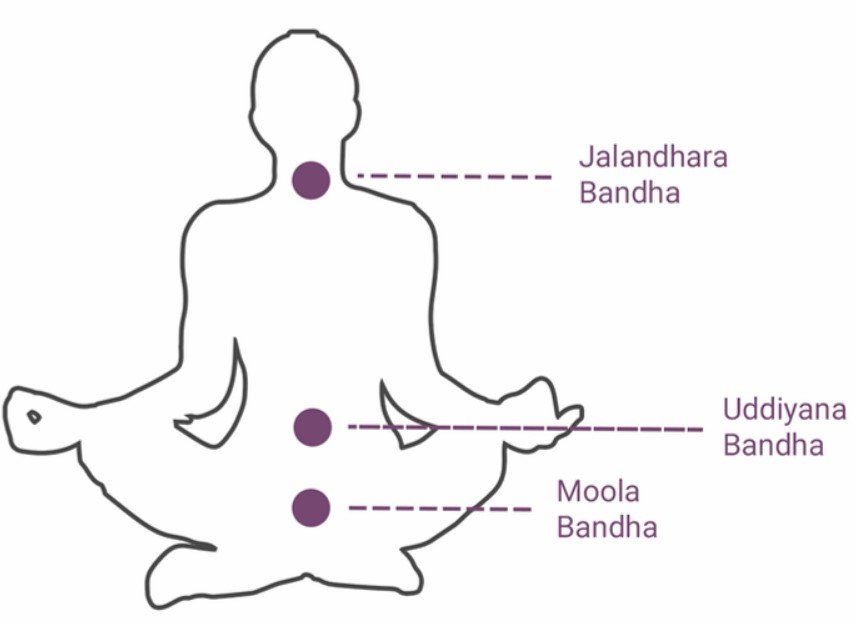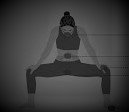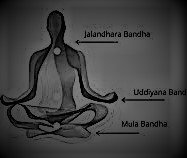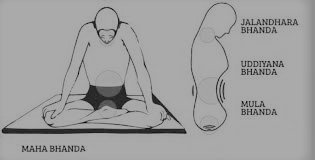Day-36 Bandhas -Mitraasha



Knowledge of Yoga is infinite, boundless and timeless. “Learning Yoga is an everlasting journey that leads you within and Within is where you find the world of immortal bliss”. –Mitraasha
Namaste All My Yoga Yaatris! May Yog Bless You!
The idea behind running this 51 Days Yoga Consciousness series is to proffer my modest learnings and share the divine pearls of Yoga science with people at large. Let’s have a conjoint intent to learn, implement and extend the wisdom of Yoga with a positive co-action and harmonious reverberation amongst each other.
What does Bandha mean?
Sanskrit word bandha refers to a kriya in Hatha Yoga, which is a kind of internal mudra mentioned as a body lock and closely translates to bond or to restraint. It is a lock or a bind in practice of yoga performed to control and guide, regulate the flow of prana (life force energy) to different parts of the body. Practice of bandha inculcates intense muscular contractions. Performing the bandhas has many benefits that we will discuss ahead.

The four bandhas are as below:
Mula bandha is a preliminary bandha mentioned in traditional yoga and its earliest textual mention is in the 12th century Shaiva Natha text Goraksha Shataka. It describes it as a yogic technique to attain regulation of breath and awaken the kundalini shakti.
Mula is a Sanskrit word which means root and Mula Bandha translates to “root lock”. In this lock, the perineum muscles are contracted inward and lifted upwards to hold energy. Practice of mula bandha initiates energy flow to the rectum, stimulates the pelvic muscles and urogenital organs.
Uddiyana bandha, also known as the abdominal lock, is the abdominal bandha which has its mention in hatha yoga, especially for the Nauli purification. Uddiyana is a Sanskrit word which means rising up.
This is a second bandha in which energy moves upward more rigorously than it does in mula bandha. Uddiyana bandha invigorates the abdominal muscles when they are pulled in when the abdominal wall is pulled in, whereas the chest raises upwards.
This act creates a gouging at the bottom of the rib cage and inhalation starts only after the abdominal contraction is released.
It is vital to follow the steps accurately and also the breath retention should not be extended for long in absence of a capable guide.
Practice of this asana is beneficial in case of constipation, weak metabolism, it stimulates better functioning of the adrenal gland and alleviates stress and anxiety, it also reinvigorates the the heart chakra.
Jalandhara bandha is the chin bandha that has its mention in Hatha Yoga. Jalandhara is a Sanskrit word which has its roots in the word jal meaning throat and dhara meaning flow.
It is done by bringing the chin down towards the chest and hence also called a chin lock or the throat lock. This bandha limits the upward flow of energy and is mostly used while practicing breath retention,however it can also be done without holding the breath.
Practice of this bandha boosts the functioning of the thyroid, parathyroid glands, supports the cardiovascular system and enhances respiratory systems.
Maha Bandha -the great lock combines all the other three bandhas. Maha is a Sanskrit word which means great, supreme. It is also known as the supreme bandha or the triple lock.
Maha bandha extends the health benefits of all three other bandhas.
It is performed by applying the above mentioned three bandhas synchronously, starting from jalandhara bandha, then uddiyana bandha and ending with mula bandha and they are released in the reverse order.
Once you have mastered earlier mentioned three bandhas individually, then amalgamate them and practice the Maha bandha.

Besides the long term worthwhile advantages, the other benefits of this bandhas includes enhanced digestion and elimination, boosting of energy, purifying of the energy channels, toning of the visceral organs, rejuvenation of overall working of the alimentary canal, composing the mind for meditation, advancing mindfulness and aiding to diminish depression.
Thought of the day: “When the breath is unsteady, all is unsteady; when the breath is still; all is still. Control the breath carefully. Inhalation gives strength and a controlled body; retention gives steadiness of mind and longevity; exhalation purifies body and spirit.” – Goraksasathakam
Link to day 35: Trikonasana-The Traiangle Pose https://kreately.in/day-35-trikonasana-mitraasha/
Link to day 37: Ardha Matsyendrasana-The Spinal Half Twist Posturehttps://kreately.in/day-37-ardha-matsyendrasana-mitraasha/
DISCLAIMER: The author is solely responsible for the views expressed in this article. The author carries the responsibility for citing and/or licensing of images utilized within the text.
